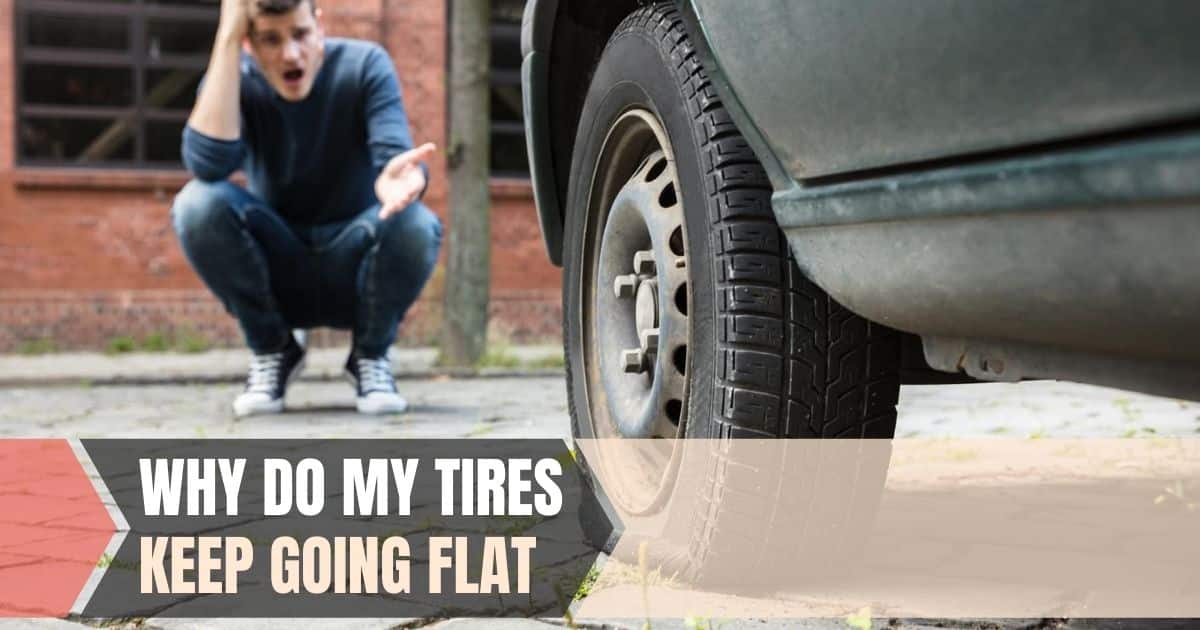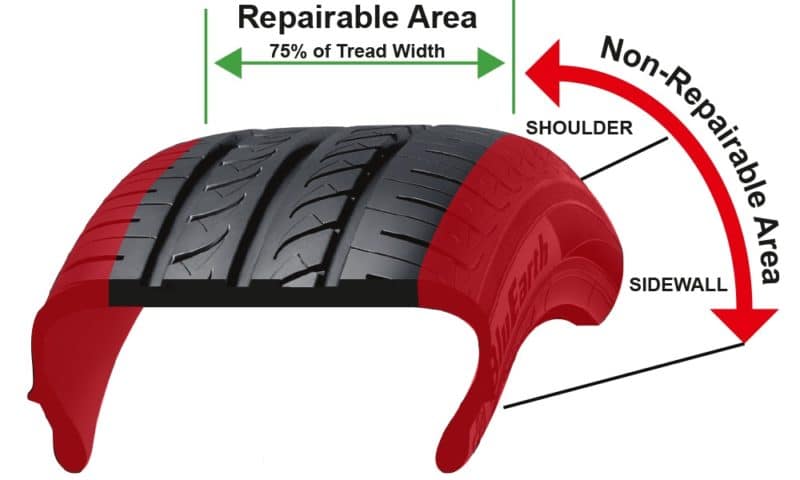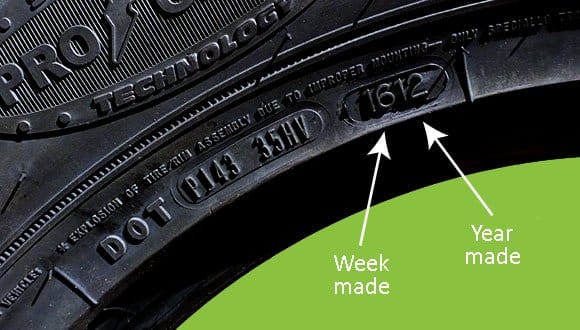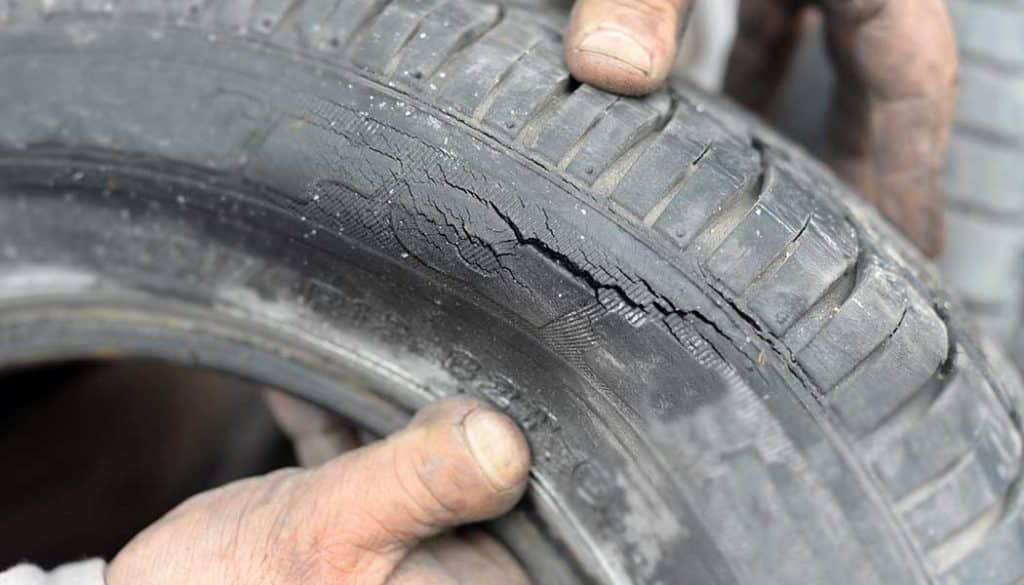
A flat tire is something that happens to everyone… once in a while! But when you are constantly dealing with flat, underinflated tires, there might be an underlying issue that is worth investigating. In fact, flat tires can affect your car’s performance, driving comfort, and on-the-road safety. Luckily, you can restore your tires’ health in no time – here are some of the causes behind tires that keep going flat!
Why Do My Tires Keep Going Flat?…
If your tires keep going flat it can be rooted in one of the following issues:
- A puncture in the tread or the sidewall
- Age of your tire
- Dry Rot
- Valve stem issues
- The tire bead
- Issues with the TPMS
Below we will cover each of these in more detail…
A Puncture in the Tread or the Sidewall
This is often the number one cause of why a tire keeps going flat. Typically a sharp object like a nail can get lodged in the tead and poke through the rubber. The size of the puncture will determine the rate of the leak. Some leaks can be really slow if the object remains lodged in the whole. Finding punctures on the inside of tires or on the inner part of the tread can be difficult to spot.
The Age of Your Tires
New tires models are extremely long-lasting, and they can keep offering high levels of safety and driving performance for 50K miles. However, over time, the rubber and tread depth can become worn down and start to decay. This can happen to tires that are not in use, including your spare tire! If you have noticed that the rubber has started to look old or crack, don’t hesitate to change them! Air can leak out through those cracks.
You can check the age of your tires on the sidewall…
Dry Rot
As we have seen, years of intense use or disuse can cause your tires to deteriorate. However, age is not the one reason behind degraded tires! In fact, dry rot is one of the most common causes behind brittleness, rubber deterioration, cracks, and reduced road traction. Dry rot is often caused by extreme temperatures, UV or chemical exposures, low pressure, or extensive periods of disuse. Whatever you are planning to do with your vehicles, regular checks can help you prevent dry rot.
Issues With The Valve System
If your tires are healthy and new but they keep going flat, you should not think twice about inspecting the valve system. The valve system is that part of your tire used to regulate inside pressure, inflate, or deflate the tire. A tire’s valve system is made up of several parts, including the valve stem core and cap.
Some strategies to keep your tires’ valve systems working properly include:
- Preventing debris from entering the valve
- Checking for cracks, wear, and damage
- Recognize the damage of moisture, heat, age, and UV rays
Replacing your tires’ valve system is the best way to ensure that they won’t get in the way of your vehicle’s performance. With functioning valve systems, you can avoid flat tires, leakages, increased stopping times, reduced traction, and poor fuel efficiency.
The Tire Bead
The tire bead, or the inner rim or edge of the tire, is that circle of rubber that has the goal to create a seal with the wheel structure, thus maintaining pressure levels, tension, and road traction. In some cases, it is possible to experience pressure leaks from the tire beads, which are also called wheel leaks or rim leaks.
These issues can happen as a consequence of poorly installed tires or uneven wheel edges. If you have hit a curb or another road obstacle, you may have bent the rim and this is the cause behind your flat tires.
Issues With Your Tire Pressure Monitoring System
If your car has been designed after 2007, it is likely for it to have a Tire Pressure Monitoring System or TPMS. This computer system allows you to monitor the health, functioning, and status of your tires. Thus, if one of the tires loses pressure, you are likely to see a warning light on your dashboard – this is usually a small symbol representing an open circle around an exclamation mark.
When this warning sign appears, you should head to a mechanic or tire dealer to check the tires’ pressure. Once the tires have been checked and properly inflated, your mechanic will set up your car TPMS on the current – and correct – tire pressure. In this way, when one of the tires becomes under-inflated, the vehicle’s computer will be able to verify the pressure loss.
In most cases, these highly sophisticated systems can help you look after your tires before they become an emergency intervention, and they can prevent severe issues while on the road. Nonetheless, if your TPMS continues to show a warning light even though you have repeatedly checked your tires, there could be a problem with the TPMS itself. Make sure to check that with your mechanic.
Common Fixes if Your Tires Keep Going Flat
There are 3 courses of action you can take if your tires keep going flat.
- Replace the tire
- Repair the tire with a plug or a patch
- Use a sealant like Fix-A-Flat for a temporary solution.
Replacing the tire can often be the best solution. However, that is an expensive solution and you should first consider if the current tire can be repaired. Small punctures in the tread can safely be repaired and go for 1000’s of miles. Punctures that occur in the sidewall should not be repaired and you should get a replacement tire instead.
Solutions like Fix-A-Flat are good as a temporary solution. You can drive on Fix-A-Flat safely for about 50 miles. If the damage is in the sidewall, Fix-A-Flat is not going to help you.
Tires Keep Going Flat – Conclusion…
Looking after your tires, checking the pressure, and inspecting the rubber for rot, cracks, and brittleness allow you to prevent severe issues such as under-inflated tires and blowouts. In the furute moving towards airless tires can fix this issue, but there is still a ways to go in that technology. Your car’s tires play a vital role in keeping your vehicle’s safety standards while you are driving. Don’t skimp on safety!


